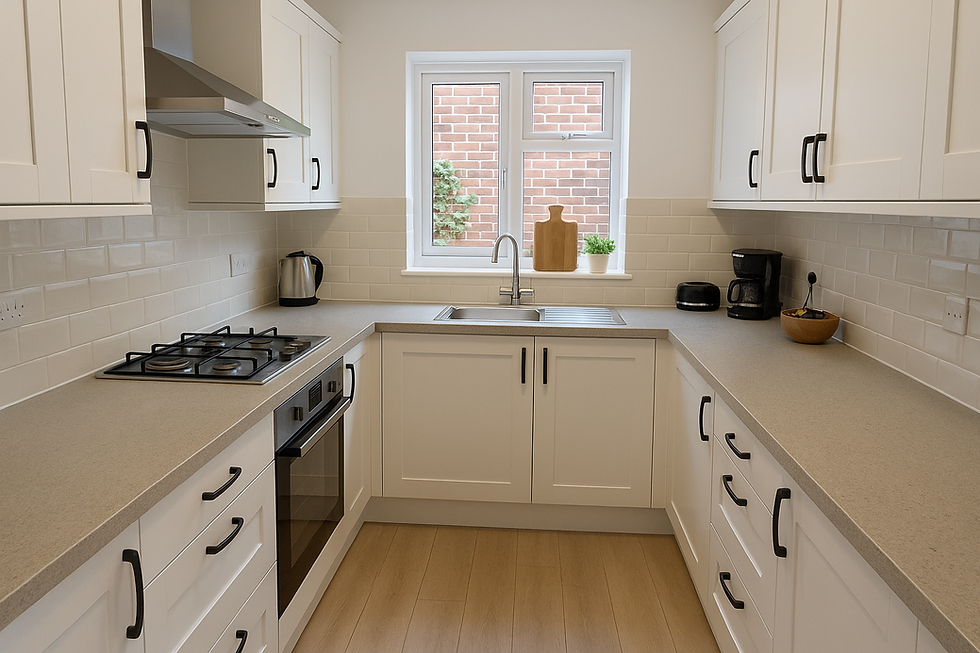The Importance of Replacing Internal Sealants in Kitchens and Bathrooms
- Joshua Cowling
- Aug 13
- 1 min read
In any home, kitchens and bathrooms are the most moisture-heavy rooms. Over time, the silicone sealants used around baths, showers, sinks and kitchen worktops can deteriorate. Cracks, mould and gaps not only look unsightly but can lead to costly water damage if left untreated.
Replacing internal sealants is a quick, affordable upgrade that keeps your home hygienic, watertight and looking fresh.
Why Internal Sealants Matter
Waterproofing - Stops water seeping into walls, floors and cabinets.
Hygiene - Prevents the build-up of mould and bacteria.
Appearance - Gives your kitchen and bathroom a clean, finished look.
Longevity - Helps protect surrounding surfaces from rot and swelling.
Signs Your Internal Sealants Need Replacing
Black mould spots that don’t scrub away.
Sealant pulling away from the surface.
Cracks or splits in the bead.
Discolouration or staining.
Persistent damp smells in the area.
Tips to Extend the Life of Internal Sealants
Ventilation - Use extractor fans to reduce moisture.
Regular Cleaning - Gentle cleaning prevents dirt from embedding.
Quick Action - Repair small areas before they worsen.
Consequences of Neglecting Internal Sealants
Leaving damaged sealant in place can cause:
Hidden leaks under baths, showers or worktops.
Swelling in kitchen units or bathroom floors.
Expensive repairs due to damp or rot.
Replacing internal sealants is one of the simplest, most cost-effective ways to protect your home. If you spot signs of wear, don’t wait - address the issue quickly to avoid bigger problems later.






Comments